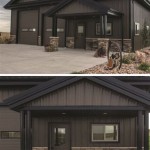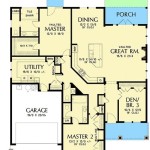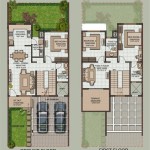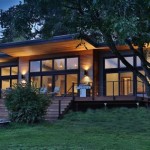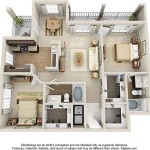Mobile Tiny House Plans: An Exploration Site
The allure of minimalist living, coupled with the freedom of mobility, has fueled the burgeoning interest in mobile tiny houses. These compact dwellings, built on trailers, offer an alternative to traditional housing, appealing to individuals seeking financial independence, environmental consciousness, and a nomadic lifestyle. Key to realizing this dream is a well-designed set of mobile tiny house plans. This article explores the vast landscape of mobile tiny house plans, providing insights into various options and considerations for prospective builders.
The journey to constructing a mobile tiny house begins with meticulous planning. Unlike conventional homes, tiny houses on wheels must adhere to specific size and weight restrictions for safe and legal transportation. This necessitates careful consideration of materials, design features, and overall structural integrity. Mobile tiny house plans serve as the blueprint for this endeavor, guiding the construction process from foundation to finishing touches.
A crucial aspect of selecting appropriate plans is understanding the intended use and lifestyle of the future resident. Are they intended for full-time living, weekend getaways, or a combination of both? Will the house be used in extreme climates, requiring specialized insulation and weatherproofing? Answering these questions will help narrow down the myriad of available options and ensure the selected plans align with individual needs and preferences.
Many online platforms and design firms specialize in mobile tiny house plans, offering a wide array of styles, layouts, and features. These resources provide detailed blueprints, material lists, and construction guides, empowering individuals to embark on their tiny house journey. However, it is essential to critically evaluate these plans, considering factors such as structural soundness, adherence to building codes, and suitability for the chosen trailer.
Beyond aesthetics and layout, mobile tiny house plans must address crucial aspects such as plumbing, electrical systems, and waste management. These elements require careful integration into the compact space, ensuring functionality and compliance with relevant regulations. Plans should specify the placement of water tanks, septic systems, electrical wiring, and appliances, providing clear instructions for their installation and maintenance.
Understanding the Different Types of Mobile Tiny House Plans
Mobile tiny house plans can be broadly categorized based on their architectural style, layout configuration, and complexity of construction. Recognizing these distinctions is essential for selecting plans that align with one's skill level, budget, and aesthetic preferences. Some common types include:
Traditional Style: These plans often mimic the appearance of conventional houses, featuring pitched roofs, dormers, and traditional siding. They offer a familiar aesthetic and can be easier to adapt to existing building techniques. However, they may be less space-efficient than other designs due to their emphasis on traditional architectural elements.
Modern Style: Modern tiny house plans prioritize clean lines, minimalist design, and efficient use of space. They often incorporate large windows for natural light and feature open floor plans to maximize living area. These designs can be particularly appealing to those seeking a contemporary and uncluttered living environment.
Rustic Style: Rustic tiny house plans embrace natural materials and reclaimed elements, creating a cozy and inviting atmosphere. They often incorporate wood siding, exposed beams, and handcrafted details. These designs can be well-suited for individuals seeking a connection with nature and a warm, inviting living space.
Contemporary Style: Contemporary tiny house designs attempt to push the boundaries of traditional tiny house design, with innovative floor plans, unique material choices, and unconventional rooflines. These designs often incorporate smart home technology and explore sustainable building practices. They can be more complex to construct, but offer a high degree of customization and individuality.
Furthermore, plans can be classified based on the layout configuration. Some common layouts include single-level plans, loft-style plans, and plans with expandable features such as pop-out sections or fold-down decks. Loft-style plans are particularly popular for maximizing sleeping space without sacrificing living area, while expandable features offer versatility and adaptability.
Key Considerations When Choosing Mobile Tiny House Plans
Selecting the right set of mobile tiny house plans involves careful consideration of several factors. Rushing the process can lead to costly mistakes and dissatisfaction with the finished product. Some key considerations include:
Trailer Compatibility: The foundation of a mobile tiny house is its trailer. The plans must be specifically designed to accommodate the dimensions and weight capacity of the chosen trailer. It is crucial to ensure that the plans specify the appropriate trailer size, axle configuration, and weight distribution requirements. Overloading the trailer or using an incompatible design can compromise safety and structural integrity.
Building Codes and Regulations: Mobile tiny houses are subject to various building codes and regulations, which can vary depending on the location. It is essential to research the applicable codes and ensure that the plans comply with these requirements. Some jurisdictions may require professional engineering certification or inspections. Failure to comply with building codes can result in fines, delays, or even the need to dismantle the structure.
Construction Skills and Resources: Building a tiny house is a significant undertaking that requires a range of skills and resources. Assess one's own construction abilities and determine whether professional assistance is needed. The plans should be clear, detailed, and easy to understand, even for individuals with limited construction experience. Consider the availability of tools, equipment, and building materials in the local area. Choosing plans that are too complex or ambitious can lead to frustration and project delays.
Budget and Material Costs: Building a tiny house can be an affordable alternative to traditional housing, but it is important to develop a realistic budget and stick to it. The cost of materials can vary significantly depending on the chosen design and the quality of materials used. Obtain quotes from multiple suppliers and factor in the cost of permits, inspections, and professional services. Selecting plans that utilize readily available and cost-effective materials can help keep the project within budget.
Climate and Environment: The climate and environmental conditions in the intended location should also be considered when choosing mobile tiny house plans. In colder climates, it is essential to prioritize insulation and weatherproofing to prevent heat loss and condensation. In warmer climates, proper ventilation and shading are crucial for maintaining a comfortable indoor environment. Choosing plans that are specifically designed for the intended climate can improve energy efficiency and reduce long-term operating costs.
Evaluating the Components of Mobile Tiny House Plans
A comprehensive set of mobile tiny house plans should include several key components. These components provide the necessary information and guidance for constructing a structurally sound and functional dwelling. Key components of the plan include:
Detailed Floor Plans: These provide a top-down view of each level of the tiny house, showing the layout of rooms, placement of doors and windows, and dimensions of each space. Floor plans should be clear, accurate, and easy to interpret.
Elevation Drawings: Elevation drawings show the exterior appearance of the tiny house from all sides. They depict the roofline, siding materials, window and door placement, and any other exterior features. Elevation drawings help visualize the overall aesthetic of the finished product.
Section Drawings: Section drawings provide a cutaway view of the tiny house, showing the internal structure, wall construction, insulation, and other hidden elements. Section drawings are crucial for understanding the structural integrity of the design and ensuring proper construction techniques.
Foundation and Framing Plans: These plans detail the construction of the trailer and the framing of the tiny house structure. They specify the type of trailer, the size and spacing of framing members, and the methods for attaching the structure to the trailer. Foundation and framing plans are essential for ensuring the structural stability of the tiny house.
Electrical and Plumbing Plans: These plans outline the electrical and plumbing systems, including the location of wiring, outlets, fixtures, pipes, and appliances. Electrical and plumbing plans should comply with relevant codes and regulations and ensure the safe and efficient operation of these systems.
Material Lists: A comprehensive material list specifies all the materials needed for the construction of the tiny house, including lumber, siding, roofing, insulation, windows, doors, and hardware. Material lists help estimate the cost of the project and ensure that all necessary materials are readily available.
Construction Instructions: Detailed construction instructions provide step-by-step guidance on how to build the tiny house, from foundation to finishing touches. Construction instructions should be clear, concise, and easy to follow, even for individuals with limited construction experience. They should also include diagrams and illustrations to clarify complex construction steps. The plans act as a roadmap during construction, providing specifications and guidance to ensure proper construction.
In conclusion, mobile tiny house plans are the cornerstone of any successful tiny house project. By carefully considering the various types of plans, key factors, and essential components, prospective builders can make informed decisions and embark on their tiny house journey with confidence.

He Invented A Tiny House On Wheels That Unfolds To 420 Square Feet

Paradise Found Explore Tropical Tiny House Plans

Explore Tiny Homes House Expedition

Live Anywhere Anytime The Secret To Owning A Portable Home With Built In Comfort

Flagstaff Small Homes Lots For Tiny House Village

14 Amazing Tiny Homes Pictures Inside Out

Tiny Mobile Or Studio Home Archanatura

Explore Tiny Homes House Expedition

Small House Design 2 Bedrooms 8 X 6m Exploring Tiny

1 Bedroom Tiny House Design Living United Homes
Related Posts

